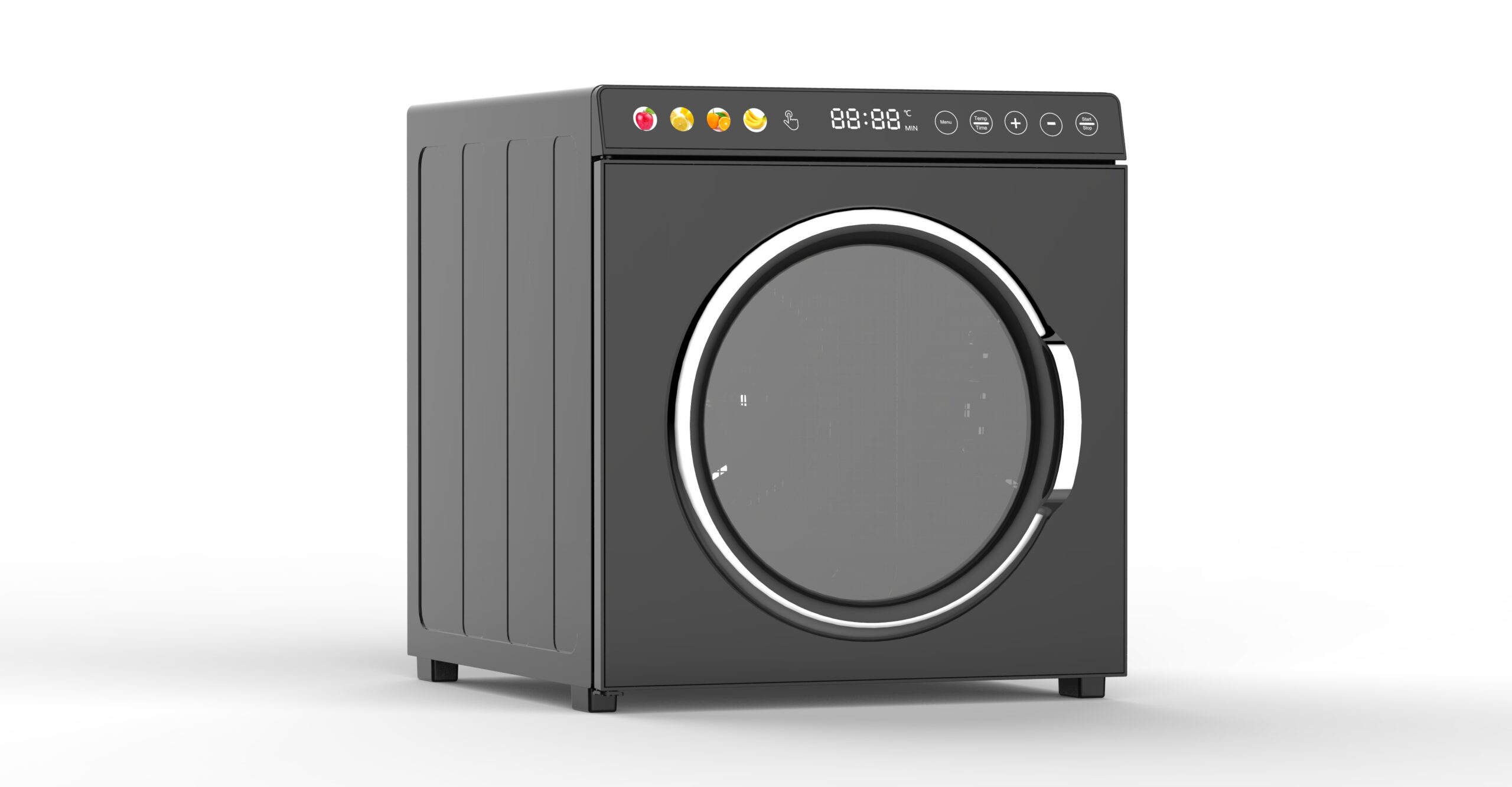Hi, I’m Steven, Sales Manager at Foshan Linden Intelligent Appliances Co., Ltd. With years of experience in the kitchen appliance industry, I’ve seen how our high-quality food dehydrators transform fresh herbs into flavorful, shelf-stable ingredients. At our factory in China, we produce top-tier food dehydrators designed for precision and efficiency, perfect for B2B partners like kitchen appliance distributors and supermarket buyers. Today, I’m sharing my expert guide on the best practices for drying herbs with a food dehydrator to lock in fresh flavors all year long.
Drying herbs is a fantastic way to preserve their aroma and taste. Whether you’re a procurement officer sourcing for a large brand or an importer looking to offer premium products, this guide will help you understand how to use our dehydrators to create high-quality dried herbs. Let’s dive into the process with practical tips and professional insights.
Why Use a Food Dehydrator for Drying Herbs?
Food dehydrators are the gold standard for drying herbs. Unlike air-drying or oven methods, our dehydrators provide consistent temperature and airflow. This ensures herbs retain their essential oils, color, and flavor. At Foshan Linden, our dehydrators are built with customizable settings, making them ideal for buyers seeking reliable, high-performance appliances.
Dehydrators are energy-efficient and user-friendly. They’re designed for bulk processing, which is perfect for wholesalers. Plus, their sleek and traditional designs appeal to diverse markets. Ready to dry herbs like a pro? Let’s get started.
Step 1: Select the Best Herbs
Quality herbs are the foundation of great dried products. I recommend fresh, vibrant herbs like basil, rosemary, thyme, oregano, or mint. Choose herbs with no wilting or yellowing leaves. For example, basil should have bright green leaves, while rosemary should feel firm and aromatic.
Harvest herbs in the morning after the dew dries for peak flavor. If you’re a distributor, emphasize the importance of fresh herbs to your clients—it makes a huge difference in the final product.
Step 2: Gather Your Equipment
To dry herbs effectively, you need the right tools. Our food dehydrators at Foshan Linden are designed for efficiency, with multiple trays for large batches. You’ll also need:
- Clean scissors or pruning shears for harvesting.
- A colander for washing herbs.
- Paper towels or a salad spinner for drying.
- Optional: Small mesh screens for tiny herbs like thyme.
Our dehydrators’ spacious trays and even airflow are perfect for high-volume production, a key feature for B2B clients.
Preparing Your Herbs for Drying
Proper preparation ensures your herbs dry evenly and retain maximum flavor. Here’s how I do it:
Wash and Dry Thoroughly
Gently rinse herbs under cool water to remove dirt or insects. I use a colander for delicate herbs like parsley. Pat them dry with paper towels or use a salad spinner. Excess moisture can slow drying and affect quality, so ensure herbs are completely dry.
Remove Tough Stems
For herbs like basil or mint, strip leaves from tough stems. For rosemary or thyme, you can dry sprigs whole and remove leaves later. This step is crucial for uniform drying, especially for large orders where consistency matters.
Handle Delicate Herbs Carefully
Tiny herbs like thyme or oregano can slip through standard dehydrator trays. I place them on fine mesh screens or cheesecloth. Our dehydrators are compatible with such accessories, making them versatile for various herb types.
Setting Up Your Food Dehydrator
Our food dehydrators are engineered for precision, a feature loved by kitchen appliance importers. Here’s how to set them up for herbs.
Arrange Herbs Properly
Spread herbs in a single layer on the dehydrator trays. Avoid overcrowding to ensure even airflow. For small herbs, use mesh screens to prevent falling through. Our dehydrators’ large tray capacity is ideal for bulk drying, perfect for supermarket buyers.
Set the Optimal Temperature
Herbs require low temperatures to preserve essential oils. I set my dehydrator to 95°F–115°F (35°C–46°C). This range protects delicate flavors while drying efficiently. Our models allow precise temperature control, a selling point for quality-focused procurement officers.
Monitor Drying Time
Herbs typically dry in 1–4 hours, depending on type and humidity. Basil may take 2–3 hours, while rosemary might need 3–4. I check hourly to avoid over-drying. Our dehydrators’ timers make this process hassle-free, a feature distributors appreciate for ease of use.
Enhancing Herb Flavor and Quality
At Foshan Linden, our dehydrators offer flexibility to customize drying for unique results. Here are my tips to elevate your dried herbs:
Dry in Small Batches
For premium quality, dry similar herbs together. Basil and mint have different drying times, so separate them. This ensures each batch retains its distinct flavor, appealing to buyers prioritizing product excellence.
Avoid Mixing Strong Aromas
Herbs like dill or sage have potent aromas. I dry these separately to prevent flavor crossover. This is especially important for specialized buyers who demand pure, high-quality products.
Experiment with Blends
Create signature herb blends by drying complementary herbs like rosemary and thyme together. This adds value for supermarket purchase managers looking for unique offerings.
Checking for Doneness
Perfectly dried herbs are crisp and crumble easily. I test by crushing a leaf—if it’s brittle and aromatic, it’s done. If it feels soft or pliable, dry for another 30 minutes. Our dehydrators’ even airflow minimizes over-drying risks, ensuring consistent results for large-scale production.
Storing Dried Herbs for Long-Lasting Flavor
Proper storage is critical to maintain flavor. Here’s how I store my dried herbs:
Cool Before Storing
Let herbs cool to room temperature for 15–20 minutes. This prevents condensation, which can spoil your batch. I spread them on a clean surface to cool evenly.
Use Airtight Containers
Store herbs in airtight glass jars or vacuum-sealed bags. I prefer dark-tinted jars to protect against light degradation. This extends shelf life, a key selling point for distributors.
Store in a Cool, Dark Place
Keep containers away from heat and sunlight. Properly stored herbs can last up to a year. For B2B clients, highlight this longevity to appeal to retailers.
Troubleshooting Common Drying Issues
Even with our top-quality dehydrators, challenges can arise. Here’s how I handle them:
Herbs Losing Aroma
If herbs lose flavor, the temperature may be too high. Stick to 95°F–115°F to preserve essential oils. Our dehydrators’ precise controls make this easy to manage.
Uneven Drying
Rotate trays halfway through if some herbs dry faster. Our dehydrators’ strong airflow minimizes this issue, but rotation ensures perfection for large orders.
Mold During Storage
Mold means herbs weren’t fully dried or stored properly. Double-check doneness and use airtight containers. This is critical for importers ensuring product safety.
Why Choose Our Food Dehydrators?
At Foshan Linden, we design food dehydrators that meet the rigorous standards of North America, Europe, Russia, and the Middle East. Our machines offer:
- Customizable Settings: Precise temperature and timer controls for perfect results.
- Versatile Designs: Sleek and traditional styles for diverse markets.
- High Capacity: Ideal for bulk production, a must for wholesalers.
- Reliable Performance: Built to pass strict quality inspections and certifications.
These features make our dehydrators a top choice for procurement officers and distributors. Explore our range at www.lindensmart.com.
Tips for B2B Partners
If you’re a kitchen appliance buyer, dried herbs are a great way to showcase our dehydrators’ capabilities. Offer samples to demonstrate flavor retention. Highlight the customizable settings and high output for supermarkets or specialty stores. Our OEM and ODM services let you create branded dehydrators tailored to your market.
Join us at trade shows to see our dehydrators in action. Contact me at sales1@fslinden.com to discuss partnerships or request a demo.
Health Benefits of Dried Herbs
Dried herbs are packed with flavor and health benefits. They’re rich in antioxidants and add nutrition to dishes without extra calories. This appeals to health-conscious consumers, a growing segment in North America and Europe. Promote dried herbs as a versatile, healthy ingredient for soups, teas, or seasonings.
Scaling Up for Large Orders
Our dehydrators’ multiple trays and efficient design are perfect for large-scale production. You can dry pounds of herbs at once, meeting the needs of big retailers. Our three production lines in China ensure fast delivery, addressing the pain point of extended lead times for B2B clients.
For procurement officers, ask about our logistics support. We streamline shipping to ensure timely delivery to North America, Europe, and beyond.
Final Thoughts
Drying herbs with a food dehydrator is a simple, effective way to preserve fresh flavors year-round. At Foshan Linden, we’re passionate about delivering high-quality appliances that make this process effortless. Our dehydrators are built for performance, design, and scalability, making them ideal for B2B partners worldwide.
Try these best practices and see the difference. Whether you’re an importer, distributor, or supermarket buyer, our dehydrators deliver results that keep customers coming back. Reach out at sales1@fslinden.com or visit www.lindensmart.com to learn more.
Let’s preserve the taste of fresh herbs together!




